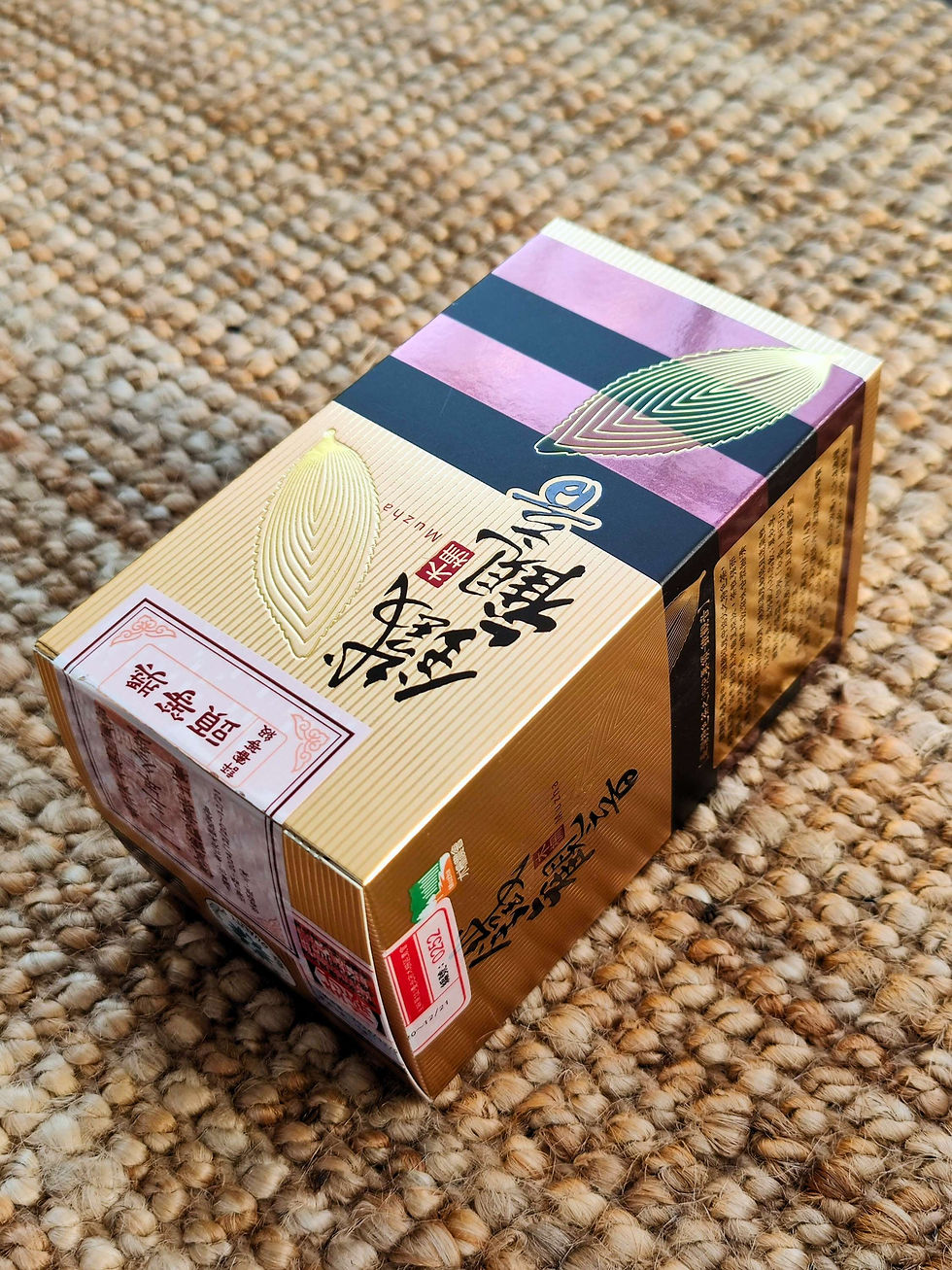Taiwan’s “Old-Tree” Assamica: Heritage Trees of Large-Leaf Tea
- Ilya Averyanov

- Aug 15
- 3 min read
In Taiwan’s mountainous tea regions grow not only the familiar small-leaf oolong varieties but also enduring stands of large-leaf Assamica tea trees (Camellia sinensis var. assamica). Known among farmers as “old-tree” (祖樹) Assamica, these tea plants are cherished for their robustness, unique flavor, and historical importance.
Origins and Tree Types
Taiwanese tea planting began during the Qing dynasty, with initial imports of small-leaf Chinese varieties from Fujian. During Japanese rule in the 1920s–30s, large-leaf Assamica types were introduced, primarily to support a burgeoning black tea industry near Sun Moon Lake and Chiayi. Over time, some of these Assamica trees naturalized or were deliberately preserved, eventually becoming the "old-tree" heritage stands found today. In local conversation, “old-tree” Assamica refers to mature trees with broad glossy leaves. They stand distinct from both saplings and cloned cultivars, offering more flavor complexity and resilience.
Botanical Traits and Brewing Potential
Assamica differs from small-leaf camelia sinensis not just in appearance, but in growth form and physiology. These are arboreal trees rather than shrubs, with thicker leaves and single-layer epidermis—traits identified by botanical studies comparing large-leaf and small-leaf varieties. Genetically, Assamica trees possess higher counts of UGT genes (involved in flavonoid glycosylation), which may explain their bold flavor and antioxidant profiles.
Teas made from large-leaf Assamica are typically used for full oxidation (black tea), and produce a rich, malty liquor often described with notes of malt, caramel, or even cinnamon. They carry robust flavor and moderate tannins, well-suited to milk tea blends. This same character is embodied in Taiwan’s own TT8 (Yuchi Black) and TT18 “Ruby Red” cultivars, which directly descend from Assamica genetics. As such, Assamica is a proud parent of many of Taiwan's modern cultivars.
Conserving and Cultivating Old Trees
With modern agriculture prioritizing high-yield, smaller-leaf oolongs, old-tree Assamica stands have become relatively rare. Many grow in forest margins or unmaintained terraces, often ignored except by local enthusiasts. However, there is growing grassroots interest in conserving these genetic resources and producing distinctive single-varietal teas.
The most well-known Assamica-derived cultivar is TT18 “Ruby Red”, released in 1999. Bred from a hybrid cross between Assamica and Taiwan wild tea (Camellia formosensis), it thrives in Yuchi, Nantou, and exemplifies Assamica's infusion properties through its deep red liquor and sweet-spicy aroma.
Old Tree Assamica possesses a number of prized traits, such as:
Genetic Resilience. These old trees often show remarkable pest resistance and cold tolerance, which are valuable for breeding climate-adaptable cultivars.
Distinct flavor profile. Assamica produces bold, body-rich teas that stand apart from lighter oolongs, offering tea drinkers contrast and diversity.
Cultural Heritage. The aged Assamica trees are living relics of Taiwan’s tea evolution—from colonial-era imports to modern cultivars that bear the marks of time and terroir.
Specialty Tea . With increasing interest in niche, place-based teas, these old-tree Assamica stands are uniquely positioned to become premium single-varietal offerings, similar to well-known ancient tea forests elsewhere.
Try this tea yourself
Now that you've learned about this precious tea, why not try some yourself? At XianCha Tea, we source wonderful black tea made from old-tree assamica, which we call "Black Oak". Thanks to the well-developed mature trees, this black tea can be steeped many times and can be brewed similarly to Heicha (dark tea) or enjoyed as a classic black tea with a distinct character by lowering the water temperature and extending the steeping times. The older tree material adds extra depth to the taste. Try this one yourself and share your thoughts with us!
Sources
方格子:“茶的大葉種、小葉種,到底有什麼差別?” (hanyitea.tw, vocus.cc)
廖老茶莊 (Facebook):差異解說大葉與小葉茶樹 (m.facebook.com)
MSN:台灣茶葉品種鑑定技術
hackMD:“茶種分類學”讨论大葉種與小葉種 (hackmd.io)
TritTea:“茶三元”品種與製茶關係 (trittea.com)
Wikipedia:「台茶18號」「台茶八號」「大葉茶」条目 (zh.wikipedia.org)
台灣茶文化 wiki:原生野生茶與大葉引進 (zh.wikipedia.org)
石昆牧普洱茶系統說明:阿薩姆分類歷史








